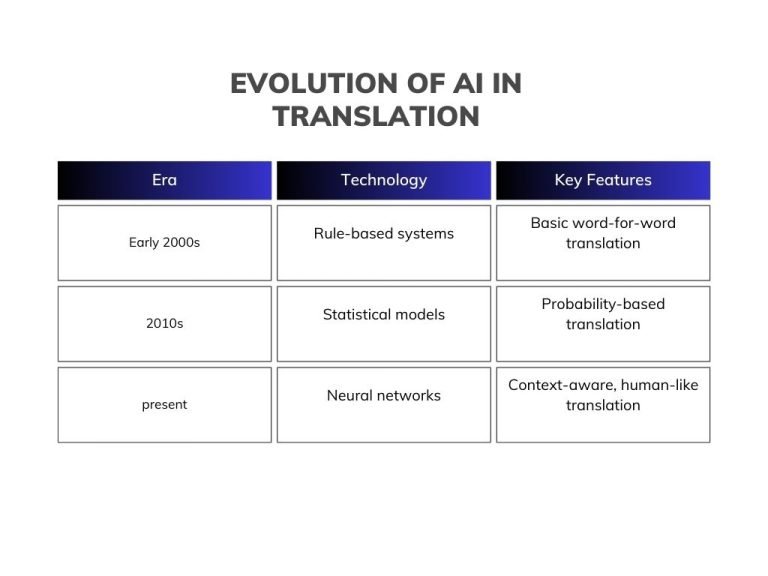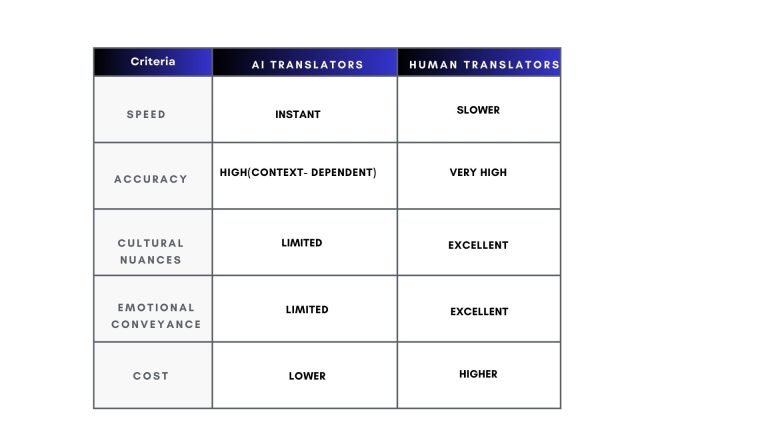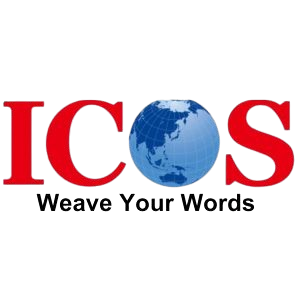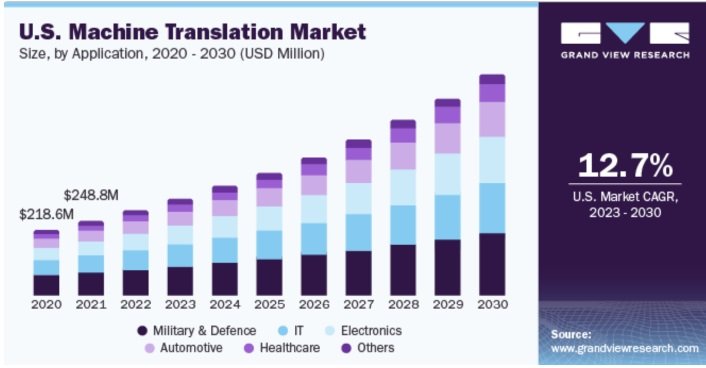AI in Japanese Translation: When Technology Symphonies’ With Human Expertise to Bridge Milestones
“Technology, like art, is a soaring exercise of the human imagination.” – Daniel Bell
As entrepreneurs, we’ve all witnessed how AI is changing the game of international communication.
Take translations as an example.
Last month, I was tasked with localizing our company’s marketing materials for a major product launch in Japan. Time was ticking and there was just too much to translate.
So we figured we’d combine AI translator technology with our own translator, Yuki. It seemed like a mountain of a task: we had to convert our English content to Japanese while also keeping up with their cultural norms.
We started by feeding our data into the AI.
A few hours later, we received the first copy of our information translated into Japanese. That’s when Yuki stepped in, checking and smoothing the AI output. She focused on making our brand sound good in Japanese, refining local phrases, and ensuring everything felt culturally appropriate.
What was once a difficult undertaking quickly become a cool collaboration between human skills and AI.
The majority of the translation was done by the AI, with Yuki filling in the gaps.
It was impressive to see.
We completed our localization quickly and ended up with high-quality Japanese marketing materials that resonated with our audience. This demonstrated that, with the correct combination, AI can work miracles in Japanese translation.
According to Market Us- The language translation sector, which is powered by AI, is on the brink of experiencing immense development in the next decade. The market is expected to reach new heights during the 2024-2033 period, as industry experts predict a staggering “Compound Annual Growth Rate” (CAGR) of 22.3%.
By 2033, this revolutionary technology is set to command a market size of USD 13.5 billion, marking a dramatic leap from its USD 1.8 billion valuation in 2023.
However, a substantial 45% of companies still prefer human translators for their nuanced understanding.
The question then arises: can AI and human translators coexist to create a perfect synergy?
Let’s dive in!
Table of Contents
ToggleWhat is AI in Japanese Translation?
AI in Japanese trAI in Japanese translation uses artificial intelligence technologies—machine learning and neural networks among other things—to translate text and speech between Japanese and other languages.
Over the years, AI has evolved from basic rule-based systems to sophisticated models capable of understanding and generating human-like language.
Example:
Google Translate’s journey from a simple phrase translator to a context-aware tool demonstrates AI’s progress in the translation industry.

Why AI Speech Translators are Game-Changers:
AI voice translators transform spoken words to text, which is subsequently translated into another language in instantaneously.
Example: During a multinational conference, AI speech translators enable speakers from different languages to instantaneously understand one another, enhancing collaboration.
Benefits:
- Speed: Translations happen in instantly, facilitating smooth conversations.
- Accessibility: Makes communication possible for people who don’t share a common language.
- Accuracy: Continuously improving with machine learning.
- Device-Friendly Interface: Optimized for All Screens
The Human Touch: Why It’s Still Essential
Despite advancements, AI often struggles with cultural nuances, idioms, and emotional tones crucial for effective communication.
Example: Translating the Japanese phrase “いただきます” (itadakimasu) is complex. While AI might translate it as “I humbly receive,” the human touch can convey its cultural significance, typically said before eating.
Though AI speech translators have a lot of benefits, they still have some limitations.
Comparison of AI Translation vs Human Translation:
In the field of translation, both AI translators and human translators have distinct strengths and limits.
AI speech translators provide instant translation, making them invaluable for real-time communication, but they occasionally fall short in capturing cultural nuances and emotional expression.
Human translators, on the other side, excel at accuracy, cultural context understanding, and emotion conveying, but at a higher cost and slower pace.
The following is a detailed comparison to help you understand the main differences between these two translation procedures.

How to Balance AI and Translation with Human Expertise
Businesses can use a hybrid model to combine the strengths of AI and human translators, with AI handling bulk translations and people fine-tuning the results.
Example:
An international e-commerce corporation utilizes artificial intelligence (AI) to translate product descriptions from English to Japanese for its new Japanese website.
Human translators then analyze and improve the AI-generated content to ensure precise technical specifications, acceptable tone, and culturally relevant product positioning.
This hybrid approach enables the company to swiftly increase its inventory in the Japanese market while preserving high-quality, locally sourced content.
Best Practices:
– Use AI for first translations to save time.
– Employ human professionals for final editing and quality verification.
– Continuously train AI with feedback from human translators
What Does AI in Japanese Translation Mean for the Future?
Potential Advancements
AI in translation industry is expected to become more sophisticated, with better contextual understanding and the ability to handle more complex languages and dialects.
Predictions:
AI will handle 80% of routine translations by 2030.
Enhanced AI models will significantly reduce the language barrier in global business.
Statistics:
According to Grand View Research, the rapid growth of the AI translation industry highlights the increasing reliance on technology to break down language barriers.
Human Translation Combined with AI Technology – Success Stories:
Real-time statistics of companies that used AI in collaboration with Human Intelligence for their translation requirements:
Microsoft has implemented a hybrid approach in its translation services. Their AI handles the bulk translation, while human experts refine and contextualize the output. This has significantly improved the accuracy of translations across their products and services.
2. Lilt:
This translation company uses an AI-powered platform that learns from human translators in real-time. Their case studies show that this approach has increased translation speed by up to 3 times while maintaining high quality.
3. Unbabel:
This company uses a combination of AI and human translators for customer service translations. They reported that this hybrid approach helped Booking.com reduce translation costs by 80% while maintaining quality.
This global translation company has integrated AI into its workflow, allowing human translators to focus on more complex tasks. They reported a 15-30% increase in productivity across various projects.
Frequently Asked Questions
AI in Japanese is referred to as “人工知能” (Jinkō Chino), meaning artificial intelligence.
Yes, Japan is at the forefront of integrating AI into various sectors, including translation, enhancing efficiency and accuracy.
While AI assists in translation, human translators are crucial for maintaining cultural context and nuance in anime.
Yes. Artificial intelligence has the capacity to optimize anime production processes, such as translation and localization, thereby increasing speed and efficiency.
In 100 years, AI is expected to master nuanced language and cultural contexts, becoming an invaluable tool for global communication.
Conclusion:
As we stand at the junction of innovation and legacy, it’s clear that the future of translation lies in the harmonious blend of human expertise and AI technology.
Imagine the precision of AI, tirelessly processing vast amounts of data in seconds, working hand-in-hand with the understanding of human translators who proofread wrong interpretations, bring culture, and add emotion to the document.
For example, a Japanese corporation’s annual financial report is being translated into English
The AI provided a quick and efficient first draft, ensuring that the core message was preserved. However, it was the human translator who added the final touches to proofread the document of any errors.
The result then turns out to be a masterpiece, showcasing the power of combining human and AI efforts.
As we embrace this integrated approach, we can look forward to a translation industry that leverages the best of both worlds—ensuring that every word we translate not only conveys meaning and is factually correct but also touches the heart.
Connect with us if you are looking for AI assited human translation.


